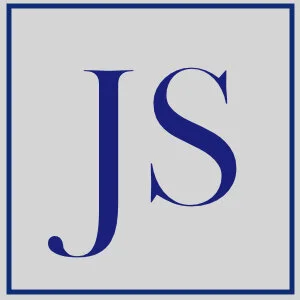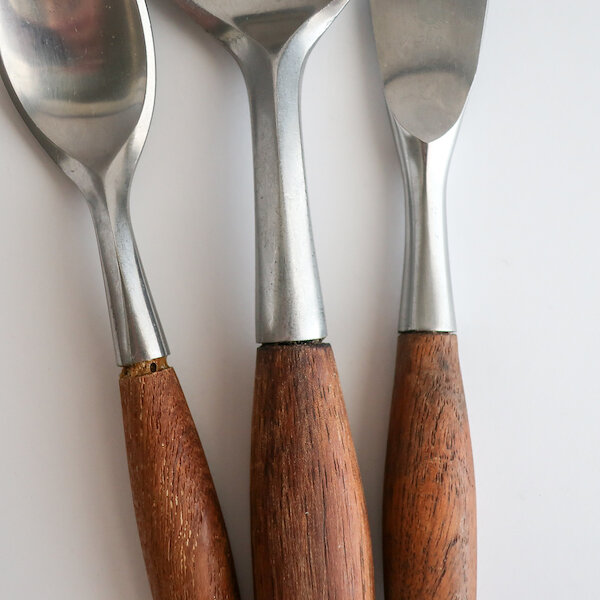I recently found a Dansk staved teak magazine rack designed by Jens Quistgaard. This piece listed in a 1959 Dansk catalogue as model 890.
The handle detaches so that it can pack flat. In this version of the design, the handle pegs in and does not pivot. It takes some firm but gentle maneuvering to get the handle in to place. Indeed, there is an old repair at one end where a previous owner was not as delicate as they should have been. You have to slide the handle straight in over the short edge, so that the pegs lock in from the underside.
The four-duck mark is branded on the underside.
Interestingly, this example of the magazine rack differs from what appears to be a slightly earlier version of the design.

In this example, offered by Dual Modern on 1stDibs, you can see the inset circle at the base of the handle where it joins the center section. The handle also seems to pivot instead of snap straight in and will rest flat against the main surface. Dual’s example has the earlier football-shaped ‘Staved Teak’ mark.
Whenever I see this sort of design change, I assume it was made for economy’s sake--the goal in business generally being to refine a design so that more money can be made faster. This magazine rack had a relatively short production run, presumably from about 1958 to about 1960 (and I have seen more of these racks with the earlier mark).
Another staved teak piece from the same period is the waste paper basket, which did dual duty as a side table when turned upside down. The teardrop shape of the magazine rack is repeated along the sides, with more of a curve to the staved pieces to form a circle.
Because of the shrinking and welling of the wood, the pieces are prone to cracks and splits.
This piece also has the earlier ‘football’ mark.
I’m always looking to purchase nice Dansk pieces. If you have some you are interested in parting with, please be in touch.
© All text and images are copyright of Jeni Sandberg




















































